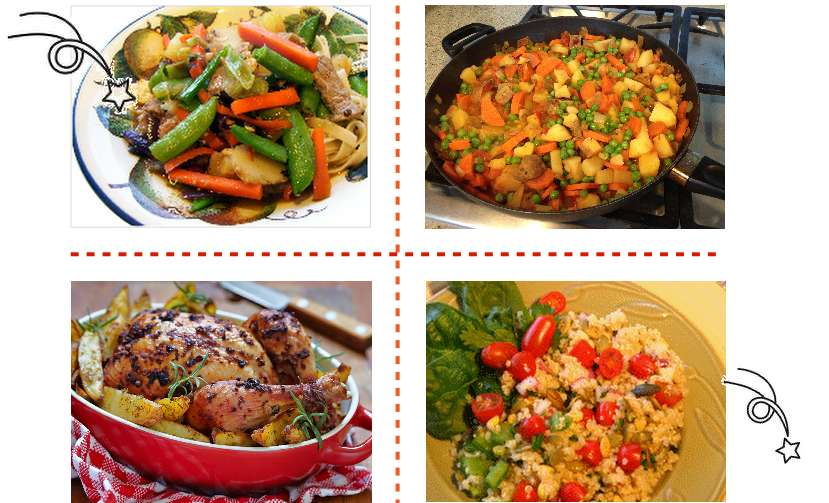
ff
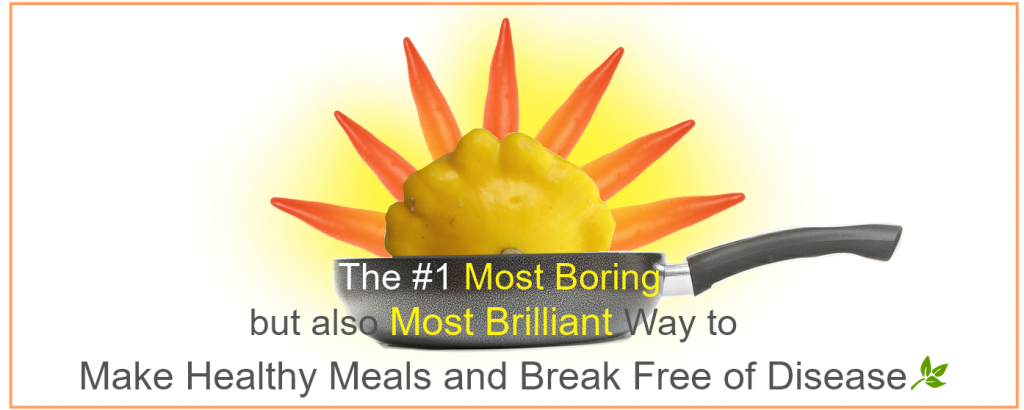
A 5-Class “Do-As-You-Learn” Workshop
Conveniently Online — Watch From the Ease and Comfort of Your Kitchen!
Join me!
…
Hello and welcome,
If you’re here, I’m guessing it’s because something’s nagging at you.

Maybe it was a warning from your doctor . . . the creeping numbers on the scale . . . media articles about the increasing rate of diabetes . . . a friend just diagnosed with cancer . . .
Maybe it’s always feeling bloated in your stomach or achy in your joints . . . zapped of energy . . . like you’d love to just curl up and fall asleep right now
The message is clear: Things need to change,
- You need to do something about your health
- You need to eat better
- You need to take better care of yourself.
But transforming the way you eat is hard. That’s true, but I’ve got a new solution for you: Instead of giving you more knowledge about what you should be eating, how about more know-how to make it happen?
After all, you undoubtedly know a lot about what you should be eating. You know you should be eating a real, whole foods diet, one with lots of fruits and vegetables, whole grains, beans, nuts, clean proteins and good fats. Every study says pretty much the same thing.

This program is for those who want to stop just knowing and dreaming about eating better. Instead, you’re ready to start doing it! And not just for a day or two or even a week, but on the consistent, long-term basis that’s key to reaping its health benefits.
If you’re ready to transition to a diet of luscious, real and whole foods, this workshop offers a key piece of the know-how to put your knowledge to work.
It’s called the Think-Ahead-and-Plan Habit
But first, keep in mind that to transform the meals you eat, you must transform how you make meals. That seems like a pretty obvious–even silly–statement. But let’s explore it further.

You might have never thought about it like this, but meal making is really a collection of habits–from the foods you always buy at the store to the types of meals and recipes you always make; from the way you chop onions and garlic to the pans and spices you always use; and from the amount and types of cooking fat you use to the condiments you like on your meals.
Your brain is wired into an efficient web of habitual skills so meal making can be efficient and smooth. And your taste buds are wired to expect and want the meals created by your web of meal making habits.
So how can you expect to change the way you eat without changing the web of habits that produces those meals?
Your “Cooking Cocoon” Think of it this way: Right now, you’re in a nice comfortable cooking cocoon. Then you find out that you need to be eating better before some serious health issue crops up or worsens.
Intellectually, you get the food-health connection. But on a practical level, your comfortable kitchen cocoon is suddenly feels very threatened.
- What are you supposed to make, what should you be buying at the store, and will it taste any good?
- Will your spouse and kids like it, what about dinner guests, and what about all the stuff in your pantry you shouldn’t eat any more?
- Do I have to buy a bunch of expensive new equipment and how do I cook all those weird health foods?
- What if you get really hungry? What about pizza, Chinese takeout and, horror of horror, cookies, cake, bagels and sugar?!!!
2 Facts to Know You are perfectly justified in feeling anxious about dietary change. I know it’s big and scary. I’ve been there. But can you trust me on these two facts:
#1 Your taste buds will transform–and faster than your brain. Gradually, they’ll come to prefer the light, fresh taste of health-giving foods. At that point, you’ll have a powerful ally on your side, as your taste buds ask for and even crave good-for-you foods.
#2 There is a magical tool that will ease you from your current cocoon to one that is equally comforting–and from that new cocoon, you’ll be able to make the health-giving meals you need, easefully and comfortably.

That magical tool is called the Think-Ahead-and-Plan Habit.
Whether you need to make big changes or small, plan for them and they will happen. Conversely, fail to plan and your hoped for transformation will fail to happen.
Most of us have experienced this sad progression: You don’t plan and get prepared for change so you fail on Day 1. You promise to catch up the next day. But things slip by that day, and then day after day after that. Eventually, your hopes and dreams fade away completely. You might even forget about them!
It’s time to stop that progression and make your healthy eating dreams come true–and to realize the amazing and wondrous health benefits that come from a consistent, delicious, real and whole foods diet (or whatever other diet you are following.)
Getting into the Think-Ahead-and-Plan habit is the key to break free of last-minute meal making and default eating–and see your meals take off in a bright new, wholesome and healthy direction!
We’ve Been Robbed! The Think-Ahead-and-Plan habit, also known as simply meal planning, is unquestionably effective. Research has solidly proven the power of organization in almost every part of our lives, from being more effective at both home and office to planning vacations, home improvements and social outings. Meal planning is just a way of putting organization to work in the kitchen so we can easily make good meals, eat well and be well.
But we’ve been robbed of this simple, valuable–and free–tool!
Over the last several decades, convenience food marketers have convinced us that cooking is dowdy and old-fashioned–along with everything related to cooking, like meal planning. That’s their game plan to divorce us from the kitchen so we’ll buy the “much more modern” option of ready-made convenience foods, take-out, fast food and boxed or frozen meals. The sad consequence is that we are trapped in the unhealthy grip of factory-made not-foods.
It wasn’t long before cultural norms coalesced behind the convenience industry’s marketing message and now we routinely assume that all things cooking are indeed dowdy, old-fashioned and have no place in today’s world.
This is why meal planning is now “The #1 Most Boring” of all kitchen skills. Test if this is true for you. Do you find yourself saying or thinking things like:
- I’ve got more important things to do than plan my meals
- I’m just not an organizer
- It takes too long to plan meals
- I just want to be spontaneous and make whatever I feel like at mealtime
- Nobody plans meals anymore
- I wouldn’t even know how to plan my meals
When subjected to honest and objective scrutiny, all of these objections fall flat. We only believe them because we’ve been inundated by very carefully constructed and clever marketing messages extolling the virtues of convenience foods. They’re fast! Convenient! Irresistibly tasty! And a great value for your dollar!
My Mission, Your Opportunity My mission lies in helping you break free of the marketing myths keeping you trapped in the world of convenience not-foods. Again and again, as I have introduced people to home cooking, they are joyfully surprised by the fun, creativity and empowerment that comes being able to make our own real and whole food meals–and take back control of our health.
And of all the kitchen and cooking skills I share, meal planning is unquestionably the most valuable. Can I please introduce and guide you to experiment with this skill? I can guarantee that you’ll discover that in fact, meal planning is not the #1 Most Boring Kitchen Tool. Instead, you’ll be delighted to see that it is instead
The #1 Most Brilliant Way to Make Healthy Meals and Break Free of Disease
Time is of the essence Learning the Think-Ahead-and-Plan Habit is so critical now, in our current health crisis. While convenience food marketers successfully weaned us from home-cooked meals to factory-made food products, we have paid a high price in terms of our health. Modern convenience foods are a poor to dangerous substitute for real whole foods and the likely culprit behind many of today’s health issues.
So join with me and learn the vital lifeskill that will enable and empower you to easily and manageably make the meals you need to take good care of you.

Meal planning seems like a pretty minor player. Can it really help me start eating healthy? The answer to that question lies in this little-known fact: There’s more to cooking than just cooking.
The 60/40 Secret In other words, “cooking” (as in chopping, frying, mixing and seasoning) is only 40% of meal making. To be successful making healthy meals, you need the other 60%, which is all about “getting ready to cook.” That 60% is comprised of six KitchenSmart® Skills:
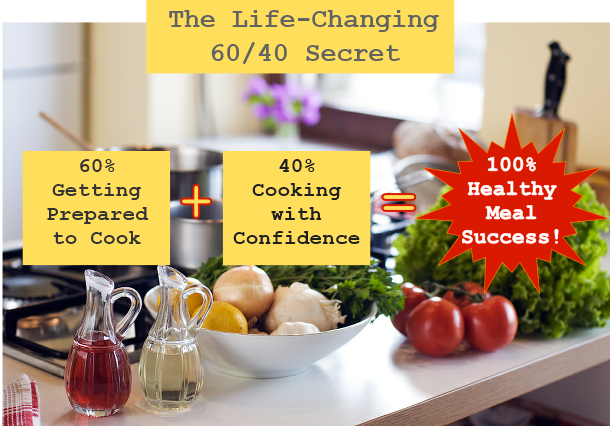
- Know What You’re Going to Make Have a guiding game plan before heading to the kitchen to make a meal
- Have New, Healthier Recipes at the Ready Organize so you can find them in a hurry–and enjoy them for dinner or any meal
- Create a Hassle-Free Work Space Make sure you’re not weighted down by counter clutter, disaster cupboards and hard-to-find tools and ingredients
- Support Yourself with a Healthy Pantry Relish the many possibilities offered by a helpful, time-saving pantry
- Equip the Kitchen, in Balance Get the few things you need–and not much more!
- Tame Your Time at the Grocery Store Don’t let shopping be a barrier to making good meal
Sadly, most people don’t know that a good chunk of meal making success lies in what you do before you ever walk in the kitchen. Lacking that big piece of the process, of course you will struggle. That’s why another big part of my mission is sharing the 60/40 Secret and the missing KitchenSmart® piece of meal making–especially the meal planning piece.
The Best and Most Brilliant of the KitchenSmart® Skills In fact, you’ll notice the Think-Ahead-and-Plan Habit is first in the list above because it is, bar none, the most essential and helpful of the KitchenSmart® skills. Failing to plan ahead leaves you vulnerable to all sorts of frustrations:
- Wasting time trying to figure out what to make when you race into the kitchen
- Resorting to the same old, tired ideas for lack of something better
- Not having the right ingredients
- Failing to get more vegetables into your meals
- Spinning your wheels without a clear game plan to follow
- Getting stressed out, exhausted and overwhelmed trying to make a meal
And we all know what happens when you face these kinds of frustrations, especially day after day. You give up and end up eating whatever or eating out way too much.

Instead of that unfortunate result, what if you spent just 5 to 15 minutes planning out a couple or few days’ meals. Imagine:
- Racing into the kitchen knowing exactly what to make
- Knowing it’s healthy because you planned it that way
- Enjoying a couple new twists that you had the brain power to think of
- Being delighted that every meal includes one or two vegetables
- And, really spectacularly, having all the right ingredients
You could hit the deck and start cooking as soon as you walked in the kitchen. Without undue stress, you would successfully get healthy meals out of dream land and onto your table, day after day.
That’s the Method Behind the Magic–how meal planning really does help you start eating healthfully! Meal planning turns meal making into something that’s doable, manageable and even a little fun for busy, ordinary home cooks.

Get Hooked! Happily, in this “learn-and-do” workshop you’ll not only learn the how’s and why’s of thinking and planning ahead, you’ll DO it, too, and experience the ease and success of making meals with a plan.
And know this: If you can just experience how nice it is to walk into the kitchen knowing exactly what to make — you will be forever hooked! You won’t want to go back to the stress of winging it at meal times. You will become your own best accountability buddy, inspiring yourself to stay on the plan-ahead track–and your healthy eating track.
It’s Just a Habit Also know that there is nothing so very hard about planning meals. The hardest part is making it habitual, something you just do every few days without a lot of thought or procrastination.
That’s the other reason we’ll focus on both learning and DOING. Once you actually plan for several weeks and experience the ease and success of making meals with a plan, then you will quickly lock into the Think-Ahead-and-Plan Habit.
Join me!
. . .

5 Content-Rich, 90-Minute Classes — Hands-on, learn-as-you-do
- Learn Listen as I share a new and more helpful way of looking at cooking, the kitchen and planning meals (~50 minutes)
- Plan Hands-on planning guidance, suggestions, tips and shortcuts to help (~20 minutes)
- Cook Let’s get cooking. Watch or cook along with me as we make one of the dish ideas featured in the planning portion of class and have one healthy meal solidly under your belt (~20 minutes)
5 Weeks of Meal Plans and Shopping Lists — Customized just for you
- By the end of each class, you’ll have created a meal plan you can use beginning the very next day; see how it feels to never worry once about “what’s for dinner”
- You’ll also have a complete shopping list with just what you need at the store–no worrying, wondering or wandering the aisles without a clue
5 Quick-Cooking Demos — Easy, healthy, tasty recipes
- see how to de-mystify cooking so you can feel comfortable and capable making meals that match your health needs. Enjoy new ideas, new flavors and new ingredients to for fun and pizzazz
2 FREE 15-Minute Coaching Sessions — Get personalized help
Chat with me online or by phone for one-on-one help to plan around your specific dietary needs
Plus A Lot More
- Handouts Every class includes reference quality worksheets to help you do as you learn, e.g., planning forms in three different formats, the Positive Parameters chart to plan meals for your health needs, the Goal Setting Circle and the Simple Prescription for Good Eating refrigerator card.
- Recordings Access recordings at any time to refresh your learning, follow along on the cooking demos again or to review the planning sessions.
- Stories and Examples Learning is reinforced and made more memorable with dozens of real life stories and examples from my many years of coaching and teaching
- Sample Plans and Pictures Get inspired and encouraged by sample plans and pictures of previous participants’ dishes
- Recipes and More Recipes Get a valuable but not overwhelming collection of recipes presented in my unique, easy-follow format. They’re healthy, of course, but also fun, quick and easy, and with plenty of adaptations to work with your needs and preferences.
- Emails After each class, you’ll get an email offering deeper insight into class topics to help reinforce your learning
Post-Workshop Follow Up — Stay motivated and on track
- The Joy of Planning Infographic Get this helpful chart with 12 more tips to make your planning easier + a short video for encouragemen
- FREE 1-Month Plan-Together Trial Membership Stay motivated by joining our monthly online Plan-Together group and get new meal ideas for the season, new ingredient ideas, encouraging thoughts and more tips.
Did I forget the best thing of all that you get?
Yummy, nurturing and nourishing meals that you will love to eat!
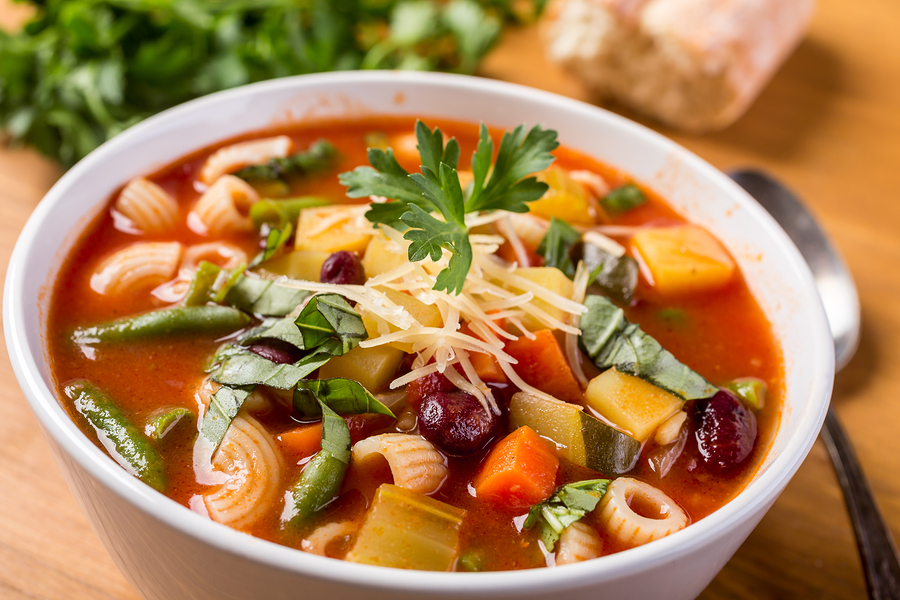
. . .

You may be surprised that there can be a whole workshop on something as seemingly simple as meal planning. This likely explains why meal planning isn’t widely used, even as powerful as it is. Misjudging it as just a simple matter, we try it, only to be blocked by the many hidden and not-so-hidden barriers that pop up when you’re getting started.
That’s what makes this workshop different. You’ll learn the simple mechanical side of planning, but also how to successfully get around the barriers that will try to stop you. Think of this learning progression as a series of four puzzle pieces, one for each class plus a bonus fifth session to wrap up and learn some final skills.

In this class learn the seven mechanical steps of meal planning, from the tools you need to creating a guiding framework, and from doing a goal check to the final shopping list. These steps provide an easy, go-to structure to get started and finish your plans successfully.
Although simple, a couple of these mechanics have a more complicated side, including the very first one: “Creating a Space of Time to Plan.” Right from the get-go, our “Instant Culture” will insist that planning takes too long and that you don’t have a single spare moment to do it. You’ll learn four solid comebacks that put a quick end to that argument so it doesn’t derail you.
The other tricky step of the mechanics is filling the blanks on your plan, which very often triggers writer’s block that can almost paralyze us! While getting around writer’s block is the subject of Class 2, in this class you learn the first two of the “Planning Shortcuts” and “Kickstarter Ideas” that provide quick workarounds: “The Basic Plate” and “Sauce Sparkle.” These short cuts–along with several kickstarter recipes, ideas and adaptations–will make quick work of your first plans.
This class also shares several recurring themes, i.e., mental landmines you might face, and productive mindsets to counter them.
- How our healthy eating hopes and dreams get submarined day after day by the “Surprise Phenomenon.”
- How to get hooked into the “Upward Energy Cycle” and tap into a continuous source of positive self-reinforcement
- Shifting your meal making paradigm from frustratingly reactive to positively proactive
- Understanding “Organizational Resistance” and how to prevent it from sabotaging your planning journey
Class 1 ends with a cook-quick demo: Very Versatile Cilantro Pesto, a riff on classic basil pesto. You can make it many different ways and use it to quickly jazz up dozens of different foods.
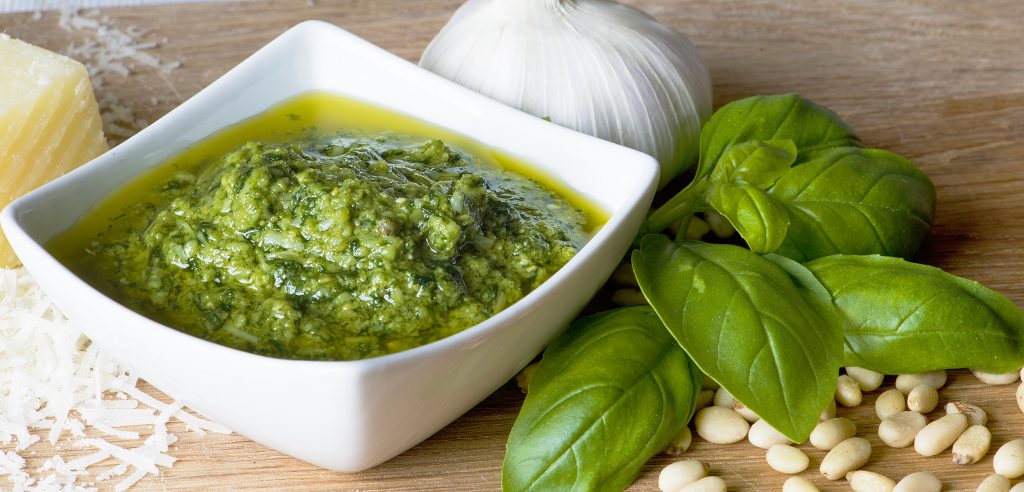

This and the remaining classes all begin by completing a Progress Chart that tracks both your wins, for positive reinforcement, as well as your challenges, for ways to improve your planning.
The rest of class explores why filling the blanks on your plan can be so challenging. While it is easy enough to write some ideas on your plan, why is it so hard to come up with an idea to write down?!
This exploration brings up the “Elephant in the Room” question, i.e., why not just find some recipes to fill the blanks on your plan? Surprisingly, after 30 years as a healthy eating coach, I have found that recipes don’t really provide the salvation we think they will. Today’s crush of recipes can actually trap us in “Option Paralysis,” causing more problems than they solve.
Planning Shortcuts and Kickstarter Ideas are designed to prevent you from getting caught in the Paradox of Choice. These two alternatives provide structured pathways for quickly coming up with satisfying meal ideas.
This class introduces the third Planning Shortcut, “Riffing on a Familiar Favorite,” and a complementary kickstarter idea, “One-Dish Skillets.” You’ll also be introduced to “System Cooking.” You’ll learn to use this process to adapt (or riff on) practically any basic recipe to better meet your health needs and goals–and to also enjoy boredom-beating variety without having to learn entirely new recipes.
In the planning portion of class, you’ll be able to draw on ideas from both Classes 1 and 2 to fill the blanks on your plan. To easily juggle the different Planning Shortcuts and Kickstarter Ideas, you’ll get introduced to Category Day Planning, another shortcut that will be explored in more depth in Class 5.
Class 2 concludes with a further exploration of the Instant Culture problem, since it is the root cause of the lack of time issue, one of the most common–and dangerous–issues we face when it comes to planning and making wholesome, real food meals.
In Class 2’s quick-cook demo , you’ll learn to make Mexican Cabbage Skillet. In addition to foundational cooking skills like chopping and sautéing onions and garlic, we learn what a skillet dish is and why you want to have a few (or several!) in your meal idea repertoire.
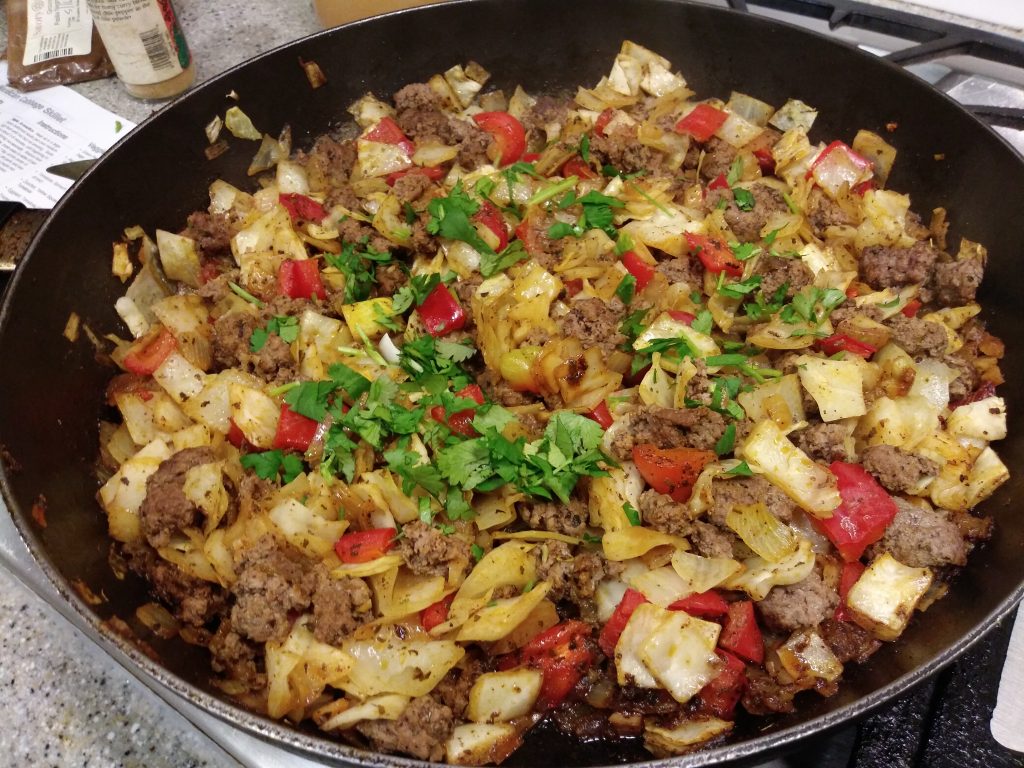
“Thank you for everything you do! This class gave me a lot of sparks and the motivation I needed to commit to meal planning — the benefits are just too good to miss out on.”
“You are a great teacher. I really like your approach of a basic framework that we can then mix and match using the various protein-veggie-starch-seasonings options to customize our meals.“

With the fundamentals of planning under your belt, as well as a couple actual meal plans, it’s time to start addressing your healthy eating needs. As the saying goes, we don’t “just plan to plan.” We plan to better achieve our healthy eating goals, i.e., to connect the dots by planning meals that match our healthy eating dreams.
But first you need to be crystal clear about your healthy eating dreams. You won’t get far with vague hopes to just “eat better,” or “eat more vegetables,” or “lose some weight.”
So you’ll learn a 4-Step process to set goals that are not only clear but effective. Drawing on research from business coach Pamela Bruner, we learn that to really be helpful, goals and resolutions must incorporate each of Results, Process and Feeling Goals. Since most people only set Results Goals, their hopes and dreams often end up in the forgotten pile within a couple weeks.
Pamela’s 3-part goal setting framework is expanded for our workshop to include a fourth step: Understanding why you haven’t achieved your Results Goals already. What barriers, challenges and constraints have prevented you from just naturally doing what’s best for your body and health?
The handouts include one for working through the 4-Step goal setting process, with tips and strategies for honing in on your goals as well as a Visualizing Exercise to help better identify the challenges and barriers you’re bound to face.
The discussion concludes by talking about some of the hopes and dreams you may have around meal making other than healthier meals, e.g., less stress, more variety, better taste, more affordability, more time-savings, easier grocery shopping and so on. Happily, meal planning is equally effective for achieving these kinds of goals, too.
The planning portion of class shares yet another shortcut: Planning with the Positives of Your Eating Parameters. Healthier eating generally means eliminating certain foods–usually ones you love! This can leave you feeling deprived and dismal. This shortcut flips the picture so you focus on what you can have, i.e., the Positives of Your Eating Parameters.
The handouts include a handy chart to help you identify your Positives and you’ll see how, with System Cooking, you can easily adapt recipes to match. As you do so, watch your food world rocket form Black & White to Technicolor®!
The Kickstarter Idea for Class 3 is patties, burgers and meatballs. In the quick-cook demo, we make Winter Squash Patties and see how easily they can be adapted for different tastes, health and other Parameter Positives.

In Class 3, you identified the tangible challenges and barriers blocking the way to your healthy eating goals. This class digs deeper, focusing on any intangible–or invisible–barriers you face.
Invisible barriers are mindsets, beliefs and assumptions that don’t want to support, and may even try to undermine, your healthy eating efforts. Not only are they are hard to spot, but you usually don’t even think or know to look for them.
It might even seem strange that your thoughts could have anything to do with getting healthy meals on the table. Cooking seems like a purely mechanical, almost thought-less activity. However, experience has shown that sneaky, invisible thoughts actually play a huge role in whether you’re able to achieve your goals.
That’s why this class focuses on them. I share several from my years as a healthy eating coach to help you understand how mind barriers work and how to identify ones that might be lurking in your brain. Interestingly, the most dangerous of them all is the “pseudo-culture” ingrained in us by the convenience food industry. It reliably zaps us of the motivation to plan for and make the healthy meals that let us take control of our food lives.
After identifying any invisible barriers that might be holding you back, you’ll learn how to break down those barriers with the four-step, Breakthrough Process: 1) Understanding the External Environment; 2) Gaining Awareness at the Inner Level; 3) Shifting to a New Kitchen Culture; and 4) Keeping on with Planning (no matter what!)
In the planning portion of class, we delve more deeply into the Category Day Formula since you will have ideas from several categories to easily plan several days’ worth of meals that fit your tastes and needs.
Finally, I draw attention to a very important reason for learning to plan your own meals–because no one, not even the slickest app, can really do it for you. Our tastes, health needs and circumstances are too unique. This workshop empowers you with the ability and skill to make the kinds of meals that are just right for you.
Creamy Cabbage Soup is the recipe we make in the quick-cook demo. As with all the other recipes in the workshop series, we see how this one soup can easily be adapted in multiple ways for your tastes and needs.

The focus of this class is one final, capstone shortcut, The Meal Planning Spark Chart. This chart lists 18 helpful and interesting “sparks,” e.g., mining the gold in your frig, tapping your food feelings and spotlighting an interesting ingredient. The inspiration provided by these sparks will jumpstart you right past writer’s block and on to a finished plan.
The Spark Chart also prevents recipe overwhelm, a common planning pitfall, and helps you “narrow the universe” so you don’t drown in meal idea options and give up planning altogether.
Finally, the Spark Chart plays an invaluable role in achieving your healthy eating goals with meal ideas that are not only wholesome, but also interesting, quick, affordable, or whatever else you’d like to see in your meals.
Speaking of healthy eating goals, it’s easy to be confused about exactly what’s healthy and what’s not. For those who aren’t following a specific dietary plan, this class shares The Simple Prescription for Good Eating and its supporting research. Its five simple guidelines illustrate my motto that “Healthy eating is easier than you think.”
In the planning portion of class we put the Spark Chart to work, learning which sparks are best for beginners and how to combine sparks for even more efficient planning.
Pasta with Chard, Raisins and Peppers is the Class 5 cooking demo dish. I use this final cooking demo to show how all of the previous demos and meal ideas gradually de-mystify cooking so you can feel confident and comfortable making good, health-giving meals.
Importantly, this class also includes a quick review of the previous four classes. At that point, you’ll be able to see how all the puzzle pieces work together:

“It felt great to have a plan because I knew what I could look forward to for dinner. Also it was so much easier to grocery shop—I haven’t had to run to the grocery store three times a week because for the most part I get everything I need in one trip–so that’s where a lot of time and stress are saved. Another benefit: My boyfriend wants to cook and having a plan makes it easier for him to join in!”
“This class gave me inspiration (or “sparks” as you call it) and motivation by showing me the benefits of planning, and was a good place to throw out questions, concerns, insecurities. I was happy to have the time to intentionally reflect on my habits.”

Here’s another great thing about the Think-Ahead-and-Plan Habit: It works regardless of your eating goals, whether your health care practitioner has recommended a low-fat diet, you need to get off gluten, you’d like to started eating a plant-based diet, you’re on a weight-loss protocol, you want to go keto or paleo–or just whatever you want!
What a lot of would-be healthy eaters fail to realize is that having a diet or eating plan is not enough. Whatever your good eating hopes and dreams, to achieve them you must have the Think-Ahead-and-Plan Habit in your toolbox. Without it you will struggle and greatly increase your chances of failure. With it, your success is practically guaranteed!


What does it take on your part to join me and get all the valuable learning, skills, tools and cooking instruction that are included with this worshop? You’d think such an action-packed workshop would surely cost in the hundreds of dollars. While it’s worth that much, the cost is actually just $97.95
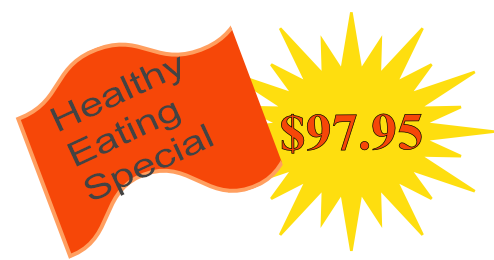
Join me!
ff
If you’ve been to my classes, you know that’s a very reasonable investment. You’ll see that I put a lot of energy and effort into my classes, which is why I consistently receive 9s and 10s on evaluations–and why you won’t be sorry to invest $97.95 in such a value-packed class. The skills, tools and systems you learn will benefit you for the rest of your meal making life.
In addition, I so want to support you in achieving your healthy eating dreams, which will then help our communities become healthier, stronger and more capable of withstanding shocks like the Coronavirus. The best way I can do that is by helping you make healthy meals that taste so good you want and prefer them rather than of the “default meals” that show up when you haven’t thought ahead to make what you––and your body––really crave.
The price is reasonable because I know if you will just try the proven, time-tested plan-ahead strategy, you’ll be hooked! You won’t go back to tedious, tiresome haphazard meal making. Instead, you’ll be making deliciously healthy meals — for the rest of your life
Your Satisfaction — 100% Guaranteed
If this workshop doesn’t meet your needs, please submit your refund request form on or before 10 days from receipt of payment and we’ll happily issue qualifying customers a refund.
…

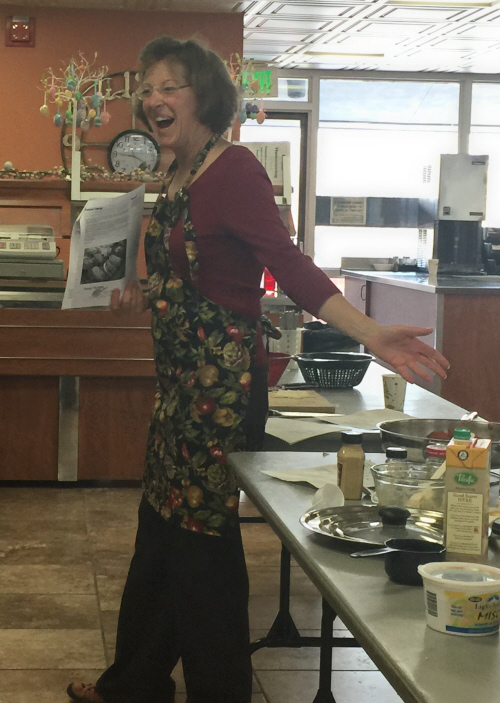
Rest assured that as your guide, I know all about the challenges of transitioning to a healthier diet. With two toddlers underfoot, I had to completely transform my family’s diet to eliminate all gluten and dairy –– quite a challenge for a former corporate attorney accustomed to sitting at a desk, drafting contracts and eating out all the time!
Nevertheless, I was able to successfully transition our diet to one rich in vegetables, fruits, whole grains and clean proteins. And my children’s joyous good health returned — and mine as well.
The key to my success was the KitchenSmart® skills I discovered during that challenging transition. They made it possible for me to put a wholesome diet into place despite a crazy-busy life. I was able to witness first-hand how something so simple produced such profound and powerful health benefits.
In the 30 years since that time, I have been excited to share this “good eating health news” as a coach, author of Take Control of Your Kitchen, software developer for the Dinner! meal management program, and longtime healthy meal making instructor for hundreds of class members.
While all 6 KitchenSmart® skills are brilliantly helpful, the think-ahead habit you learn in this workshop is unquestionably the #1 Most Brilliant of them all. In fact, I still remember the day, a year or so after getting into the plan-ahead habit, when a stunning realization hit me: I no longer worried all day about what to make for dinner — or lunch or breakfast! And what a gleeful (yes, gleeful!) feeling that was. It freed up so much energy and opened space to discover the side of cooking that is engaging, rewarding and even a little fun and creative. I would love to introduce you to the same magic!
…

No doubt you’ve heard the saying that the hardest part about cooking is deciding what to cook. That’s because deciding what to make for dinner–-or breakfast or lunch-–is harder than you think. You must juggle up to a dozen considerations, from what you feel like eating, what your family likes, and how to beat boredom to concerns around nutrition, affordability and manageability given your time constraints.
So whenever you struggle making the wholesome, health-giving meals of your dreams, ask yourself: “Did I race into the kitchen clueless?” Planning ahead is the only way to make sure you make meal decisions you’re happy with and that meet your healthy eating hopes and goals. That’s why I’m so excited to share this valuable life skill with you–and help you make it a lifelong habit.
Please do join me for this class and experience the surprising joy of planning ahead and seeing your healthy eating dreams come true.
“This course more than met what it described would be covered.”
“The course underscored for me the importance of meal planning, and this support will help me when I feel overwhelmed trying to stay on track with the diet I need.”
“You were awesome!”


As you get in the plan-ahead habit and start seeing healthier meals show up on the table, get ready for a surprise. In addition to healthier meals, it’s likely the plan-ahead habit will also surprise you with meals:
- That aren’t so stressful, hurried and harried–and are even a little enjoyable
- That aren’t just the same old thing–and are even a little fun and creative
- That are yummy, filling and something you can look forward to and feel excited about
- That give you good energy and help maintain a healthy weight
- That don’t blow your food budget
- That make you feel proud of yourself for taking good care of YOU
You might say that you can practically have it all with the Think-Ahead-and-Plan Habit!
Yes I’m Ready to Make My Healthy Eating Dreams Come True!
“Loved your class. The amount of thought, follow-up and practical skills are priceless.”
